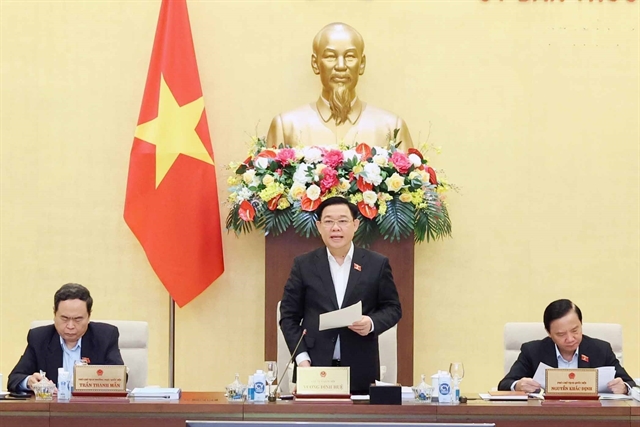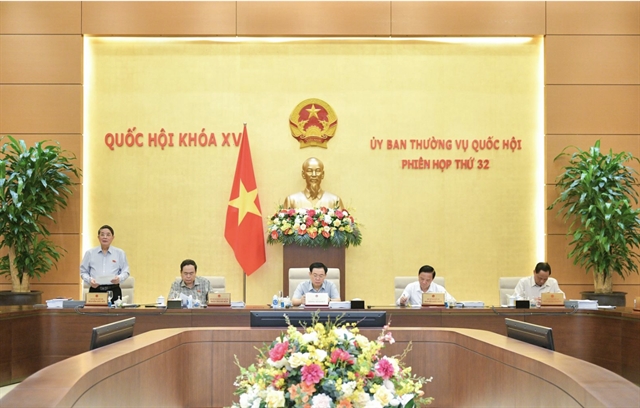 Politics & Law
Politics & Law

 |
| National Assembly Chairman Vương Đình Huệ chaired the meeting of the NASC discussing the Urban and Rural Planning Bill on Monday. — VNA/VNS Photo |
HÀ NỘI — National Assembly Chairman Vương Đình Huệ suggested adding a number of new issues to meet the requirements of urban and rural development in the coming time, remove difficulties and inadequacies in the process of implementing the law, and ensure synchronisation and unification of planning laws.
Huệ spoke in the National Assembly Standing Committee (NASC)’s meeting on Monday discussing the draft Urban and Rural Planning Law.
Huệ highly appreciated the preparation and meticulousness of the law project and said that the preliminary report on examining the draft law mentioned many issues that need to be further discussed.
He expressed agreement with the approach of this law project which inherits the 2009 Urban Planning Law and the rural planning section in the 2014 Construction Law, and concretises some contents of the Planning Law.
The first is the relationship between urbanisation and new rural construction. He asked to review criteria to recognise advanced new rural areas and the draft law should have regulations for urban districts for future planning as some rural district-level units could be considered urban districts.
Second is the relationship between urbanisation and urban economic development. Therefore, it is necessary to tell the difference between this law project and the Urban Development Management Law project that is being researched and developed.
Another very important issue is that planning must adapt to climate change, which requires careful review and research.
Regarding the height of the buildings, he said: "When working with the Ministry of Construction, we learned that due to flight safety and security issues, no one banned the construction of high-rise buildings in the inner city.”
“The problem was how to handle the relationship between infrastructure and building height. In fact, the Ministry of Construction does not regulate this height, so it is difficult for urban areas to renovate old apartments,” he said.
About planning scope, for example, Hoàn Kiếm District has a planning scope of only 5sq.km, so according to population criteria, it had to decrease a lot of people, but then changed its thinking, taking all four old inner-city districts of Hoàn Kiếm, Ba Đình, Đống Đa and Hai Bà Trưng into an overall plan to balance the problem of population and infrastructure.
“Should the standards and criteria for population density and building height be left to planning consultants to propose on the basis of the master plan and not be fixed? Hong Kong (China) and Singapore are full of skyscrapers,” Huệ said.
The chairman recommended that the drafting committee continue to review to ensure synchronisation and consistency in the legal system, because this law project involves many other laws, as well as unify some terms and study more closely the related regulations.
Addressing the meeting, Minister of Construction Nguyễn Thanh Nghị said that after 14 years of implementing the Urban Planning Law and nine years of implementing the Construction Law, along with new requirements of development practices, limitations and inadequacies have been revealed that need to be researched, amended, supplemented and completed.
The law project aims to create a legal basis and synchronous, comprehensive and unified management tools to adjust urban and rural planning activities, overcome shortcomings, limitations, inadequacies and difficulties in practice to meet the requirements for the new development stage of the country and enhance the effectiveness and efficiency of State management, ensuring the interests of the State, people and society, Nghị said.
The law strengthens decentralisation and simplifies procedures in formulating, appraising, approving and adjusting urban and rural planning to meet the requirements of investment and business environment improvement, he said.
The law also supplements and clearly stipulates the content of underground space planning for provincial urban areas, centrally run cities and newly planned urban areas in order to maximise the efficiency of space use, synchronously linking construction space above and below ground and water surface, he added. — VNS